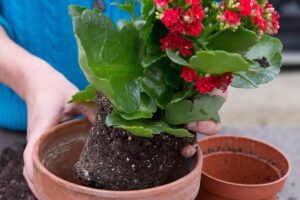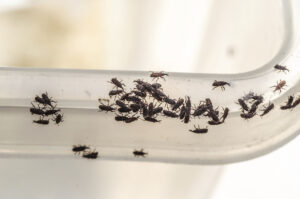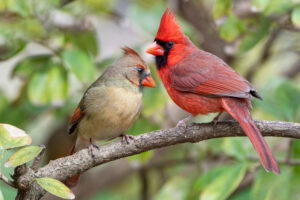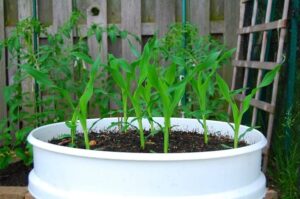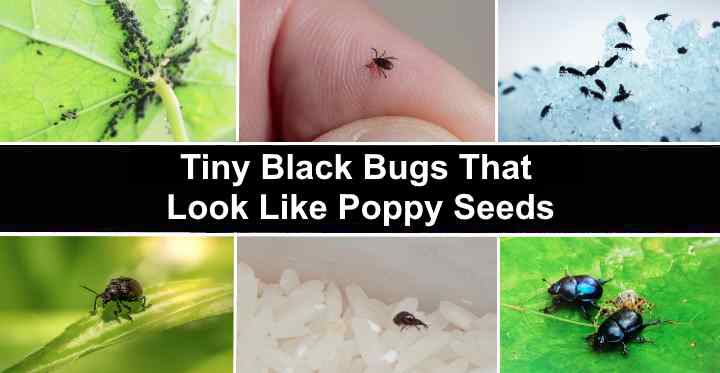
Introduction
Tiny black bugs that resemble poppy seeds can be a nuisance in homes, gardens, and other spaces. While their small size may seem harmless, these insects can cause damage to plants, fabrics, and even human health. Identifying these pests and understanding their behaviors is crucial for effective management and prevention. Below are some common types of these tiny black bugs and methods for dealing with them.
There are a few Tiny Black Bugs that Look Like Poppy Seeds that can confuse you! Read on to ensure you spot them right on time!
1. Flea Beetles:
Flea Beetles measure about 1/10 of an inch. Flea beetles are known for their hopping behavior and may be mistaken for tiny black bugs look like poppy seeds in the garden. Control them with insecticides or row covers. Protecting your garden early in the season can thwart their damage.
Appearance: Flea beetles are small, typically less than 1/4 inch long, and often have a shiny black coloration. They may have enlarged hind legs, which enable them to jump when disturbed, resembling fleas.
Habitat: These beetles are commonly found on various plants, especially those in the cabbage family (Brassicaceae), including cabbage, broccoli, kale, and mustard greens.
Damage: Flea beetles feed on the leaves of plants, creating small, shot-hole-like patterns on the foliage. Severe infestations can stunt plant growth and reduce crop yields.
Management:
- Introduce natural predators such as ladybugs or lacewings.
- Use floating row covers to protect plants from adult beetles.
- Apply organic insecticides like neem oil or insecticidal soap to deter or kill flea beetles.
2. Fleas:
Fleas are notorious for causing itchy bites and can sometimes be confused with tiny black bugs look like poppy seeds in bed. Eliminate fleas by treating your pets and their environment with appropriate products. Consistency in pet care and thorough cleaning are essential for flea control.
Appearance: Fleas are tiny, wingless insects with flattened bodies, typically measuring about 1/16 to 1/8 inch in length. They are dark brown to black in color and have strong hind legs for jumping.
Habitat: Fleas infest mammals, including pets like dogs and cats, as well as wildlife. They lay eggs in carpets, bedding, and furniture, thriving in warm, humid environments.
Damage: Fleas can cause itching and discomfort for both pets and humans through their bites. They can also transmit diseases such as typhus and plague.
Management:
- Regularly vacuum carpets, upholstery, and pet bedding.
- Wash pet bedding and blankets in hot water.
- Use flea control products such as topical treatments, flea collars, or oral medications for pets.
- Consult with a pest control professional for severe infestations.
3. Bed Bugs:
Bed bugs are notorious for their small size, often mistaken for tiny black bugs that look like poppy seeds. They hide in crevices of bedding and furniture, emerging at night to feed on blood. To eliminate them, wash and vacuum bedding regularly, and consider professional pest control. Vigilance is key, as early detection can prevent a full-blown infestation.
Appearance: Bed bugs are small, oval-shaped insects, usually reddish-brown but can appear black when unfed. They are about the size of an apple seed, approximately 4 to 5 millimeters long.
Habitat: Bed bugs infest areas where people sleep, such as mattresses, bed frames, and furniture. They are nocturnal and feed on blood, typically biting humans during the night.
Damage: Bed bug bites can cause itching, redness, and discomfort. Infestations can lead to stress, anxiety, and difficulty sleeping.
Management:
- Thoroughly inspect and clean bedding, furniture, and surrounding areas.
- Use mattress encasements to trap and prevent bed bugs from spreading.
- Apply insecticides labeled for bed bug control, following instructions carefully.
- Seek professional pest control services for extensive infestations.
4. Black Carpet Beetles:
Black Carpet Beetles are small, round bugs that resemble poppy seeds in size and shape. These tiny black bugs are notorious for causing damage to carpets, upholstery, and even clothing. Their larvae feed on natural fibers, such as wool and silk, which can result in unsightly holes and damage.
Appearance: Black carpet beetles are small, oval-shaped insects with a shiny black or dark brown coloration. They are about 1/8 to 3/16 inch long and have a distinctive pattern of scales on their bodies.
Habitat: These beetles infest carpets, rugs, upholstery, clothing, and stored food products. Their larvae feed on natural fibers like wool, silk, and feathers.
Damage: Black carpet beetle larvae can cause damage to fabrics, carpets, and other household items. Adult beetles feed on flower nectar and may accidentally invade homes.
Management:
- Regularly vacuum carpets, rugs, and upholstered furniture.
- Store clothing and linens in sealed containers to prevent infestation.
- Clean up spills and crumbs to reduce food sources for larvae.
- Use insecticide sprays or dusts labeled for carpet beetle control, targeting areas where beetles are present.
5. Booklice (Psocids):
Booklice despite their name, are not actually lice but tiny insects that look like poppy seeds. They are commonly found in damp and humid environments, such as old books, wallpaper, and stored food products.
Appearance: Booklice are tiny insects, usually less than 1/16 inch long, with soft bodies and pale colors ranging from whitish-gray to light brown. They may appear black in certain lighting conditions.
Habitat: Booklice thrive in damp environments such as kitchens, bathrooms, basements, and libraries. They feed on mold, mildew, and organic matter found in humid conditions.
Damage: While booklice do not bite or cause structural damage, their presence may indicate moisture problems or mold growth in buildings.
Management:
- Improve ventilation and reduce humidity levels indoors.
- Repair leaks and moisture issues to eliminate breeding sites.
- Remove mold and mildew from surfaces using appropriate cleaners.
- Use dehumidifiers or fans to dry out damp areas where booklice are present.
6.Drugstore Beetles:
Drugstore beetles are brown seed-like bugs often found in pantries and kitchens, infesting stored food products. To get rid of them, discard contaminated items and keep your pantry clean and dry. Proper food storage and sealing entry points are essential to prevent their return.
Appearance: Drugstore beetles are small, reddish-brown insects measuring about 2 to 3 millimeters in length. They have an elongated oval shape and are covered in fine hairs, giving them a somewhat fuzzy appearance. Their antennae gradually widen towards the tips.
Habitat: Drugstore beetles infest a variety of dry organic materials, including grains, flour, cereal, rice, nuts, seeds, dried fruits, spices, herbs, pet food, and even tobacco. They can also infest non-food items such as books, leather, and museum specimens.
Damage: These beetles feed on stored food products and other organic materials, contaminating them with their feces, cast skins, and secretions. Infestations can lead to significant economic losses for homeowners and businesses, as affected products become unfit for consumption or sale.
Management: Control of drugstore beetles typically involves a combination of preventive measures and treatment strategies.
- Control of drugstore beetles typically involves a combination of preventive measures and treatment strategies.
- Prevention includes proper storage practices, regular inspections, and sanitation to eliminate food sources and breeding sites.
- Infested items should be promptly discarded. Insecticide treatments may be necessary for severe infestations, with targeted applications to cracks, crevices, and other hiding places.
In conclusion, identifying tiny black bugs that resemble poppy seeds is essential for effective pest management. By understanding the characteristics, habitats, and behaviors of these common household pests, homeowners can implement appropriate prevention and control measures to protect their homes, gardens, and health. When dealing with severe infestations or uncertainty about pest identification, consulting with a pest control professional is recommended for tailored solutions and peace of mind.

